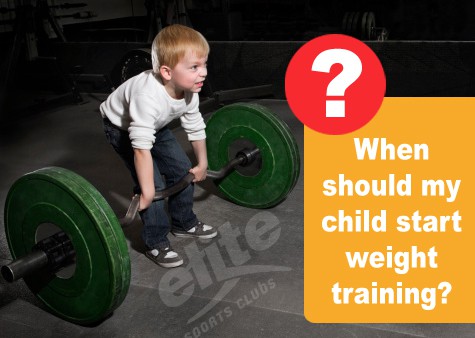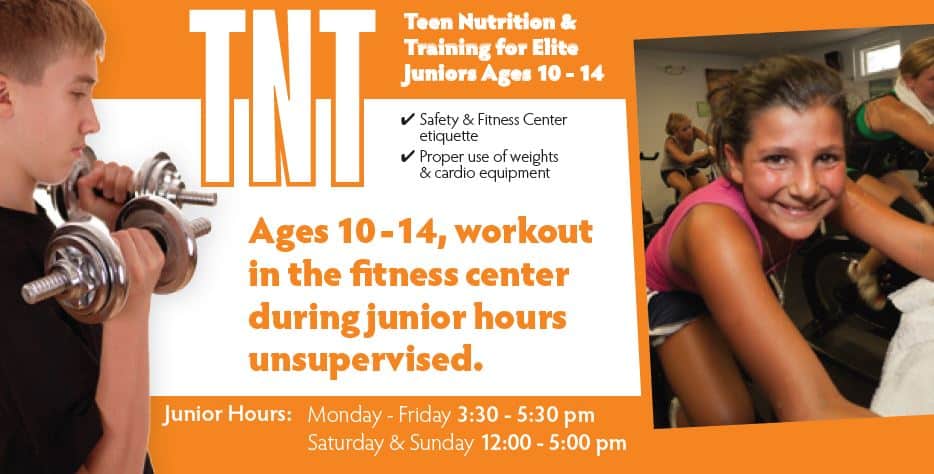Each year, a growing number of children join highly competitive sports. Three-year-olds are playing tennis. By age 8, kids are involved in select soccer. What’s next – golf for diaper dandies? With competitive sports on the rise, it seems everyone is looking for an edge. Parents are hiring performance and speed coaches and personal trainers in the hope their child will make a select team. The idea of competition is healthy, but is there a point of diminishing returns? Thankfully, there is research that suggests when children should begin serious training.
The National Strength and Conditioning Association (NSCA) is considered a leading authority on the science of resistance training. The organization defines it as “a specialized method of conditioning, which involves the progressive use of a wide range of resistive loads and a variety of training modalities (body weight, tubing, machine and free weights) designed to enhance health, fitness and sports performance.” NSCA’s research on youth resistance training focuses on risk factors, health and fitness benefits, and optimal procedures.
In general, children are more prone to injury while playing sports than they are while participating in resistance training. Only three minor injuries were listed in studies associated with resistance training. When followed properly, resistance training ranks lower in injury prevalence than football, soccer, wrestling and gymnastics. Resistance training injuries have often times been attributed to improper loads and/or progressions, poor lifting technique and lack of adult supervision.
There are a number of benefits to youth participating in resistance training, as long as proper protocol is followed. It allows children to build strength and improve athletic performance. When a child gains strength, he or she is more likely to perform well on such field tests as grip strength and long jump. The forces associated with properly prescribed resistance training are less than what occurs during competition itself. Other benefits of resistance training include increases in anaerobic capacity, mental health and bone quality. It also has been linked to decreasing the obesity epidemic.
The NSCA recommends all youth resistance training programs include instruction on proper lifting techniques, safety procedures and specific methods of progression. According to researchers, the ideal approach to resistance training incorporates it into a progressive conditioning program with the volume and intensity of training changing throughout the year. When coupled with individual effort and qualified instruction, strength training outcomes are generally positive. One key point: Children are adolescents – not adults. Adult exercise guidelines and training philosophies should never be imposed on youth.
There are a number of basic guidelines that should be followed to ensure proper youth resistance training. Exercise environments, for example, should always be safe and free of hazards. Training sessions should begin with a 5- to 10-minute warm-up period, followed by a series of light loads that emphasize correct exercise techniques. When a session progresses, a child can perform 1 to 3 sets of 6 to 15 repetitions of a variety of upper- and lower-body strength exercises.
A number of specific exercises should be incorporated into the program, including ones that strengthen the abdominal and lower back region and promote symmetrical muscular development and appropriate muscle balance around the joints. Cool-down exercises should emphasize static stretching and less intense calisthenics. Once a regimen is established, it can be tweaked with progressively more challenging exercises. One of the most important factors to keep in mind: support and encouragement from instructors and parents will help children maintain their interest in resistance training.
Teen Nutrition & Training is required for early entry into the Fitness Center (ages 10-14). Enroll your child in this special program, which teaches safety and Fitness Center etiquette, proper use of weights and cardio equipment, as well as exercise routines geared towards youth. Check out our full youth program & youth fitness at Elite.
By Paul Alexander, Personal Training Director, Elite Sports Clubs-North Shore


